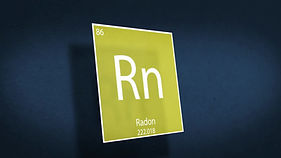


RADON TESTING
Healymonster Home Inspections provides a comprehensive Radon Testing Inspection service. We utilize advanced detection equipment to meticulously assess radon gas levels within your home. We conduct precise measurements and thorough analysis to determine radon concentrations accurately. Our dedicated team compiles a comprehensive report detailing our findings and providing necessary recommendations. Rest assured, all our inspections adhere strictly to relevant regulations. Our mission is to provide you with peace of mind through reliable and precise results. With a commitment to delivering top-notch service, we prioritize your satisfaction as our esteemed customer.
GOAL OF INSPECTION
At Healymonster Home Inspections, our aim is to pinpoint potential indicators of improper installation, insufficient functionality, or the need for repair of radon mitigation systems.
InterNACHI's Home Inspection Standards of Practice mandate radon mitigation system inspections, we offer this service as part of an extensive residential property evaluation, or as an independent, standalone inspection. Your satisfaction is our priority.


KEYPOINTS FOR RADON TESTING
Radon testing is crucial for all homes, irrespective of their age or location.
Radon is a radioactive gas that forms naturally when uranium, thorium, or radium, which are radioactive metals break down in rocks, soil and groundwater. People can be exposed to radon primarily from breathing radon in air that comes through cracks and gaps in buildings and homes. Because radon comes naturally from the earth, people are always exposed to it.
For accurate results, the EPA suggests testing for at least 48 hours with sealed building conditions.
If radon levels exceed the EPA action level of 4.0 picocuries per liter (pCi/L), homeowners should take steps for mitigation.
Home inspectors should furnish a comprehensive report outlining test results and suggested mitigation measures.
Crucially, radon testing demands specialized capabilities. Home inspectors must be properly certified. If uncertified, inspectors should recommend hiring a certified radon testing professional.








